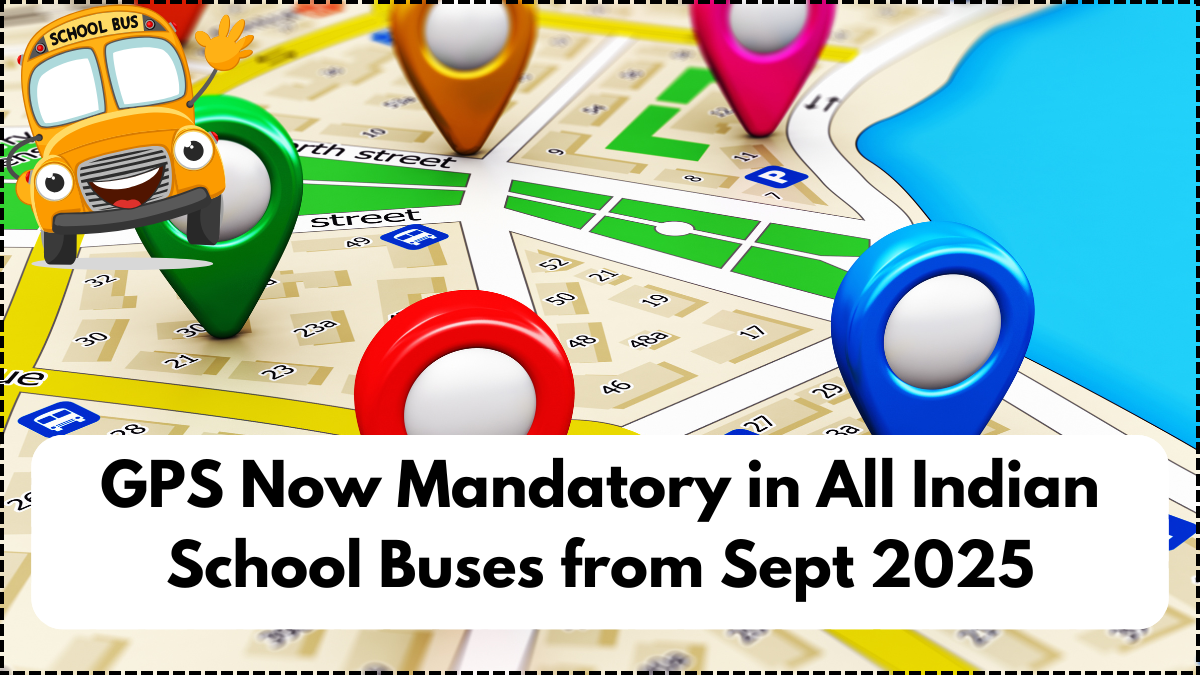Starting September 2025, the Indian government has made AIS-140 GPS Tracking systems compulsory in all school buses across the country. This regulation, issued under the Ministry of Road Transport and Highways (MoRTH), aims to enhance the safety and monitoring of school transportation systems. With the rise in student commuting accidents and parental concerns, this move aligns with global best practices in child safety and fleet management.
The school bus regulation India framework now requires real-time tracking, automated emergency alerts, panic buttons, and route mapping integrated into every school vehicle. Authorities have given school operators a final compliance window until August 31, 2025, to install the required AIS-140 devices, ensuring children’s rides to and from school are safer than ever before.

What Is AIS-140 and Why Is It Being Enforced?
The AIS-140 GPS Tracking standard, developed by the Automotive Research Association of India (ARAI), is a set of specifications mandated for public transport and commercial vehicles. It ensures vehicles are equipped with advanced location tracking, emergency buttons, and automated reporting systems that transmit data to designated control centers.
Under the school bus regulation India framework, AIS-140 aims to:
-
Track real-time movement of school buses through GPS
-
Allow parents and school staff to monitor routes and delays
-
Enable automatic alerts during route deviations or long halts
-
Provide panic buttons accessible to students and staff
-
Record historical trip data for audits and investigations
With children among the most vulnerable passengers, the integration of AIS-140-compliant systems becomes not just a legal requirement but a social necessity.
Key Requirements for School Buses Under AIS-140 Mandate
To comply with the AIS-140 GPS Tracking rules, all school buses must be fitted with certified GPS units and functional accessories before September 2025. Below is a breakdown of the required components and their functions:
| Component | Description |
|---|---|
| AIS-140 GPS Device | Transmits real-time vehicle location to control centers |
| Panic Buttons | Installed at student-accessible points for emergencies |
| Driver Authentication | Verifies driver identity before trip start |
| Geo-Fencing | Sets route boundaries to prevent deviations |
| GPRS/4G SIM Card | Ensures live data transfer to regional command centers |
| Inbuilt Battery Backup | Allows uninterrupted functioning during power failures |
Each of these features is essential to meet the standards outlined under school bus regulation India, ensuring both compliance and accountability.
Impact on Schools, Parents, and Transport Operators
The rollout of AIS-140 GPS Tracking across India will directly affect school administrations, private fleet operators, and parents. Schools will be responsible for verifying vendor compliance and ensuring the GPS feeds are integrated with school apps or monitoring dashboards.
Benefits of the implementation:
-
Parents can track bus movements through mobile apps
-
Schools can monitor routes, driver behavior, and delays
-
Transport vendors gain credibility with live tracking and safety features
-
Quick emergency response through integrated alerts and trip data
For schools in metro cities, many of these systems are already in place. However, rural and semi-urban institutions are now racing to meet the September 2025 deadline, especially those running contracted fleets that must retrofit vehicles quickly.
Government Push and Penalties for Non-Compliance
As part of the school bus regulation India policy, state transport departments are conducting surprise audits and deploying mobile compliance vans in July and August 2025. Buses found without AIS-140 equipment after September 1 will face deregistration, penalties, and suspension of route permits.
Key enforcement strategies:
-
Random field inspections by regional transport officers (RTOs)
-
Online verification of GPS device IDs and activation status
-
Mandatory digital dashboard integration at school admin offices
-
Revocation of contracts for non-compliant fleet vendors
Government support programs are available for budget schools, including subsidies and vendor tie-ups. These efforts are designed to make the AIS-140 GPS Tracking system universally accessible and affordable.
Conclusion
The nationwide enforcement of AIS-140 GPS Tracking for school buses marks a transformative step in India’s commitment to child safety and digital infrastructure. The school bus regulation India mandate, coming into effect from September 2025, will usher in a new era of monitored and secure school transport. With only weeks left for compliance, it is crucial for school authorities and transport contractors to act swiftly to meet regulatory standards and protect young passengers.
FAQs
What is AIS-140 GPS and how does it work?
AIS-140 is a government-mandated GPS tracking system that enables real-time location tracking, route monitoring, and emergency alerts in school buses and other public transport vehicles.
Is GPS tracking now compulsory for all school buses in India?
Yes, under school bus regulation India, all school buses must be fitted with AIS-140 GPS Tracking devices by September 1, 2025.
What happens if a school bus is not AIS-140 compliant?
Non-compliant buses may face penalties including fines, deregistration, and cancellation of permits by transport authorities.
Will parents be able to see their child’s bus in real time?
Yes, most AIS-140-enabled buses are connected to mobile apps that allow parents to view real-time bus locations and receive alerts.
Are there any government subsidies for installing AIS-140 in school buses?
Yes, schools can avail of state-level subsidy schemes or bulk installation discounts offered through certified vendors.
Click here to learn more